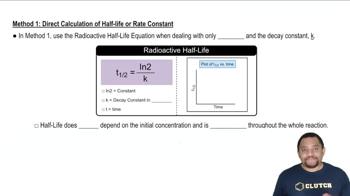Here are the essential concepts you must grasp in order to answer the question correctly.
Electrode Potentials
Electrode potentials, measured in volts, indicate the tendency of a chemical species to be reduced. Standard electrode potentials (E°) are measured under standard conditions (1 M concentration, 1 atm pressure, and 25 °C). These values are crucial for predicting the direction of redox reactions and calculating the Gibbs free energy change (∆G°rxn) for reactions.
Recommended video:
Gibbs Free Energy (∆G°rxn)
Gibbs free energy change (∆G°rxn) is a thermodynamic quantity that indicates the spontaneity of a reaction at standard conditions. It can be calculated using the equation ∆G°rxn = -nFE°cell, where n is the number of moles of electrons transferred, F is Faraday's constant, and E°cell is the cell potential derived from the electrode potentials of the half-reactions.
Recommended video:
Gibbs Free Energy of Reactions
Half-Reaction Method
The half-reaction method involves breaking down a redox reaction into its oxidation and reduction half-reactions. Each half-reaction can be assigned a standard electrode potential, which allows for the calculation of the overall cell potential (E°cell). This method is essential for determining the Gibbs free energy change and understanding the electron transfer processes in the reaction.
Recommended video:
Method 1 of Radioactive Half-Life
 Verified step by step guidance
Verified step by step guidance


